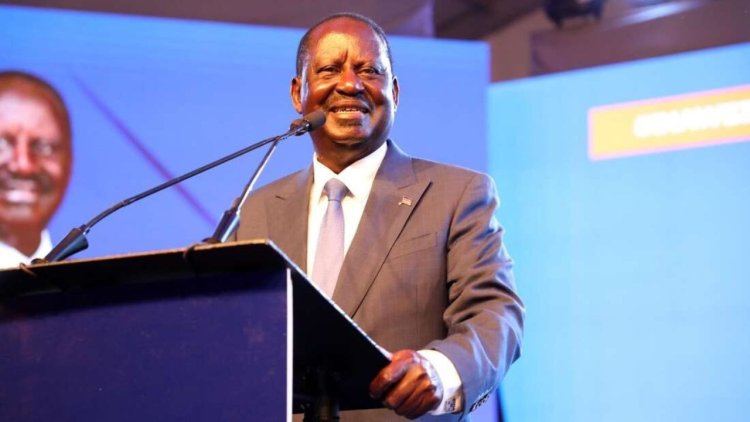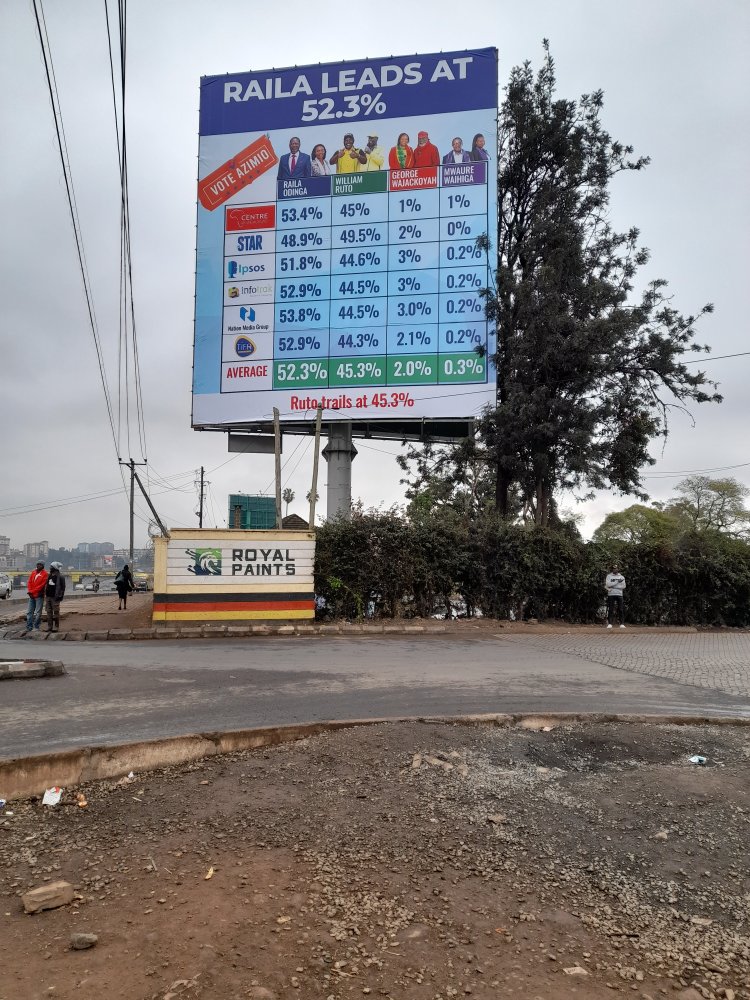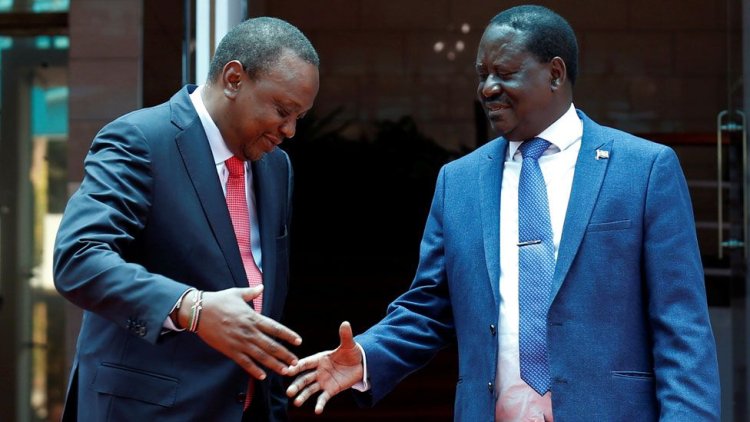How Raila's Fifth Election Loss Was Boosted By Opinion Polls
It could be his last attempt at seeking the presidency and extinguishing his dreams of reaching the promised land of Canaan with his loyal supporters following a political journey that stretched back over 40 years.

Azimio la Umoja presidential flag bearer, Raila Odinga tasted defeat for the fifth consecutive time in a presidential election, having lost in 1997, 2007, 2013 and 2017 before Monday, August 15, 2022.
This year was even more painful given that a majority of opinion polls had placed him ahead of President-elect, William Ruto. Days before the polls, IPSOS Synovate released its findings for the first time since the campaigns began, which put him as the most likely candidate to win in the first round by way of 52 per cent of the votes cast. DP Ruto was projected to get 45 per cent.
TIFA, on the other hand, predicted that Raila would emerge victorious with a 53 per cent win. Ruto came in second at 45 per cent.
There were however two polls done by Intel Research Solutions (IRS) which saw Ruto upset Raila. One of them on August 1 projected Ruto’s win at 50.5 per cent. The former premier was placed second at 42.7 per cent.

A billboard erected along Thika superhighway showing results of opinion polls ahead of the August 9 general elections. /MARVIN CHEGE.VIRALTEAKE
To affirm to Kenyans that Raila's Azimio was sure of a victory, they compiled results of their opinion polls into a list which was captured in form of a billboard, which was erected along Nairobi's major roads, one of them Viral Tea was able to capture.
However, Raila got a rude shock when he was beaten to the ballot by Ruto and the United Democratic Alliance (UDA), following an official declaration by the Independent Electoral and Boundaries Commission (IEBC) chairperson, Wafula Wanyonyi Chebukati.
It could be his last attempt at seeking the presidency and extinguishing his dreams of reaching the promised land of Canaan with his loyal supporters following a political journey that stretched back over 40 years.
Raila's Long Road to Retirement
This year's elections could probably go down as the most significant for the 77-year-old because he was endorsed by an unlikely man, President Uhuru Kenyatta. Many of his loyalists believed that Azimio had the secret weapon to beating Ruto's 'Yellow Wave', with a massive enhancement from the Mt Kenya region's very own, Martha Karua.
Raila Amolo Odinga was born January 7, 1945, Maseno, Kisumu County. The businessman served as prime minister of Kenya from 2008 to 2013 following the controversial presidential election of December 2007.
Odinga is the son of Jaramogi Oginga Odinga, the first vice president of independent Kenya. After earning a master’s degree in mechanical engineering in East Germany in 1970, Odinga returned to Kenya to become a lecturer at the University of Nairobi.
During his time at the university, he also engaged in engineering-related business ventures, including one that would later become East African Spectre, Ltd. He left the university in 1974 and was soon employed by the Kenya Bureau of Standards (KEBS), where he attained the position of deputy director in 1978.
In the 1970s and ’80s, Odinga was politically active and supported government reforms in Kenya. In 1982 he was accused of plotting against Pres. Daniel arap Moi and was imprisoned without trial for six years.
After Odinga’s release, he was twice arrested for campaigning against one-party rule, and in 1991 he sought refuge in Norway. He returned to Kenya in 1992, however, and was elected a member of the National Assembly that year under the banner of the Forum for the Restoration of Democracy-Kenya (FORD-K), the party led by his father.
After Jaramogi’s death in 1994, Odinga became embroiled in a leadership struggle within the party and in 1996 left FORD Kenya and joined the National Development Party (NDP).
In 1997 Odinga stood unsuccessfully as the NDP’s candidate for election as president of Kenya but was able to retain his seat in the National Assembly. He emerged third with 667,886 votes, against the late Mwai Kibaki's 1,911,742 and the late Daniel Arap Moi's 2,500,865.
He and the NDP thereafter gave their support to Moi and the ruling Kenya African National Union (KANU). Odinga joined Moi’s cabinet as energy minister in 2001, and the NDP was absorbed into the ruling party the following year, with Odinga becoming secretary-general of KANU.
Odinga’s hope of succeeding Moi as KANU’s candidate for the presidency in the 2002 elections was shattered when Moi called upon the party to support Uhuru Kenyatta, son of former president Jomo Kenyatta, which was the cause of the fallout between Raila and Moi.
Several KANU members, including Odinga, formed the Rainbow Alliance within the party in protest of the choice, and they instead advocated for a vote among KANU members to determine the party’s presidential candidate. Their pleas went unheeded, and KANU officially named Kenyatta as its candidate a few months later; in response, Odinga and the Rainbow Alliance left KANU and formed the Liberal Democratic Party (LDP).
The LDP soon joined with a coalition of several parties, the National Alliance of Kenya (NAK), to form the National Rainbow Coalition (NARC) under the leadership of the late president Mwai Kibaki. Although terms of the agreement between the LDP and NAK were not completely revealed to the public, the two parties reportedly promised to equitably share cabinet posts and power; including naming Odinga to the new, strong prime minister post that would be created, if Kibaki were elected president.
NARC’s efforts to challenge KANU were successful, and Kibaki was elected president in December 2002, the first non-KANU president in independent Kenya’s history. NARC candidates (including Odinga) won more than half of the seats in the National Assembly.
In February 2008 former UN secretary-general, the late Kofi Annan and Jakaya Kikwete, then president of Tanzania and chairman of the African Union, brokered an agreement between Kibaki and Odinga for the PNU and the ODM to form a coalition government. This led to Odinga’s being sworn in on April 17, 2008, to the newly created post of prime minister under Kibaki’s presidency and with a power-sharing cabinet.
He would later play a key role in the promulgation of a new Constitution of Kenya on August 27, 2010, which counted among its many changes a devolution of power to the local level of government. This came after a referendum that promoted the new Constitution.
Raila & Uhuru Handshake
In 2013, he would contest the presidency once again, but lost again to the Jubilee alliance under the Uhuru-Ruto presidency. A petition to invalidate the elections that year was thrown out by the Supreme Court under then-Chief Justice Willy Mutunga, thus electing Uhuru Kenyatta as the fourth president of the Republic of Kenya.

Uhuru Kenyatta and Raila Odinga during the 'handshake' in 2018. /BBC
In 2017, he contested again and lost again to incumbent Uhuru Kenyatta. However, his petition to have the results nullified by the Supreme Court under then-Chief Justice David Maraga was successful, one of the key moments in Kenya's history.
However, Raila would later urge his supporters to boycott the repeat polls until the IEBC agreed to their demands. This led to Uhuru winning unopposed for his second term in office and amidst the tension that rocked the country, he went into the handshake deal with Uhuru in 2018.
The two leaders would unite their parties and 23 others to form the Azimio la Umoja-One Kenya coalition ahead of the August 9, 2022, presidential elections.

 admin
admin 




